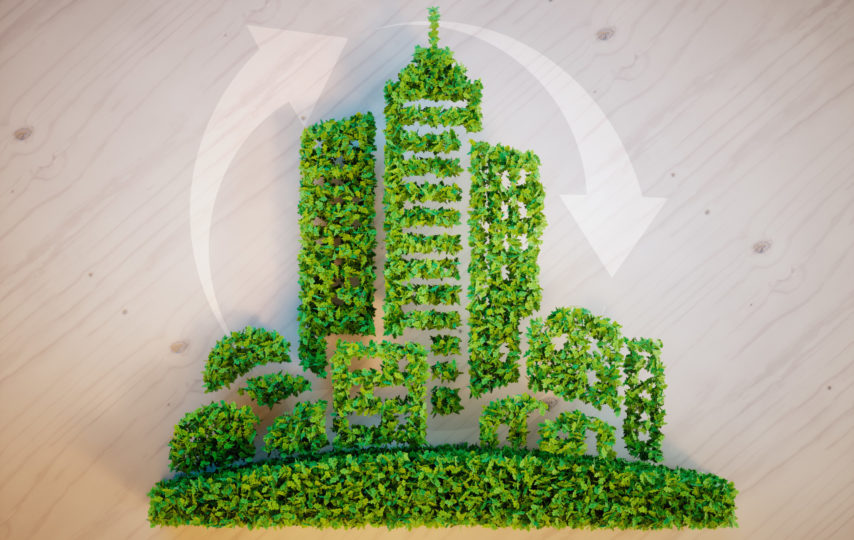Did you know that the United States alone generates almost a third of the world’s total waste? That’s despite the country only representing 4% of the global population. Each year, the US generates municipal solid waste (MSW), amounting to 250 to almost 300 million tons.
The thing is, not even a third of all that waste gets recycled or composted. The bulk of MSW ends up in landfills, or worse, as pollutants on land or in water.
Fortunately, industrial businesses can go green by adopting eco-conscious practices. In doing so, they can curb their waste production and carbon footprint. All these can then help them reduce their overall environmental impact.
On that note, we created this guide listing some of the top green business ideas you might want to consider. Read on to discover what you can do to become a cleaner, greener organization.
1. Incorporate the Use of Biodegradable Materials
The world produces over 300 million tons of plastic each year. A considerable portion of these goes toward manufacturing packaging materials. Worse, many of these packaging items end up not in landfills but lakes, rivers, and oceans.
For this reason, businesses going green should factor in packaging material biodegradability.
As explained in this guide, “biodegradability” refers to how long it takes for a material to break down. It involves decomposition in which a material turns back into natural elements. The more biodegradable an object is, the faster it decays and becomes “part” of nature.
Biodegradable packaging materials include recycled paper bags and cardboard boxes. You also have plant-based options, such as those made from corn or seaweed. These materials disintegrate faster than traditional plastic packaging.
2. Go Digital to Reduce Office Supply Consumption
In 2020, the global office supplies market had an estimated value of $247 billion. North America once again leads the pack with its estimated market share of $82 billion. In any case, paper-based products are among the most utilized office supplies.
By going digital, you can trim not only your use of paper but of writing and printing materials, too. The cloud is also a safer, more secure way to store data. After all, paper documents can catch fire, and if you don’t have copies, you’ll lose them forever.
Also, keep in mind that paper making accounts for about 2.5% of industrial production. Industrial manufacturing processes, in turn, come with a heavy carbon footprint. So, by reducing reliance on paper-based items, you can also help lower carbon emissions.
3. Invest in Energy-Efficient Facility Updates
In 2019, the industrial sector accounted for about a third of the total energy consumption in the US. It consumed about 3.25 quadrillion BTUs of energy in the form of electricity alone. The primary source of electricity, in turn, are fossil fuels.
The thing is, fossil fuel combustion leads to the release of greenhouse gases (GHGs) into the air. So, it’s no wonder that electricity production in the US accounts for a quarter of GHG emissions. That’s on top of the 22% of GHGs the industry sector generates.
With that said, making energy-efficient updates can help you create a green business. You can start with something as simple as switching to LED lights, which are 75% to 90% energy efficient. They also last for at least 20,000 hours, so they can also help cut your facility’s waste production.
You should also consider heating, ventilation, and air conditioning upgrades. This is especially true for Energy Star-rated HVAC systems for commercial use. They can reduce energy consumption by at least 21%, or up to 46%, using the best technology.
Be sure to automate and program thermostats, too, to ensure they only operate as needed. For example, you can set your facility’s air conditioner to turn on a few minutes before the start of the workday. You can also schedule your HVAC system to turn off at a specific time or the end of the workday.
4. Take Advantage of the Sun
Solar energy’s carbon footprint is about 18 times lower than coal and 13 times lower than gas. Solar energy, unlike fossil fuels, also doesn’t produce pollutants. All those features make solar power one of the cleanest energy sources out there.
Your business has two ways to harness the power of the sun: via active and passive methods. Active methods involve using solar panels, batteries, heaters, and lights. If you don’t have solar panels yet, consider installing them while the 26% tax incentive is still up for grabs.
Passive solar, in turn, uses a building’s structure and design to minimize energy use. For example, you can reduce lighting use in areas with many windows that get a lot of sunlight. You can then install window films to help control light and UV radiation.
5. Make the Most Out of Your Windows
Windows account for about 30% of a building’s heating and cooling costs. These costs have to do with the heat they either allow to escape or enter. Either way, that 30% goes to complete waste, not to mention add to your carbon footprint.
Fortunately, you can use high-quality window films to address these window woes. Window tinting blocks external thermal energy from entering the glass panes. These window treatments also act as a barrier to keep conditioned air inside a building.
Window films can do all these without blocking all the light. In fact, some tinting products are almost invisible, which means they allow a lot of sunlight in. Despite that, they’re still great at blocking both thermal and UV energy.
Today Is the Day You Should Go Green
As you can see, there are at least five easy ways for industrial businesses to go green. Even just reducing your use of “new” paper supplies and going for recycled paper can already help. From there, you can invest in energy efficiency updates, such as LED lights or solar panels.
Interested in more guides to help you create a green business? Feel free to stick around to browse our other educational resources then!


